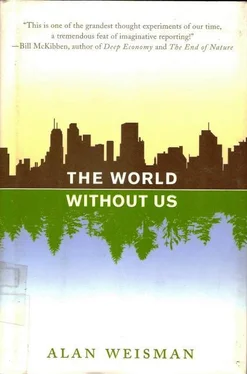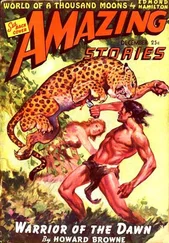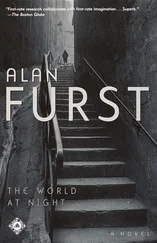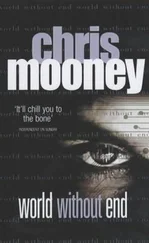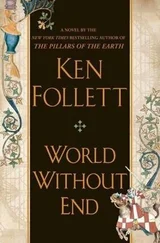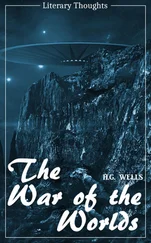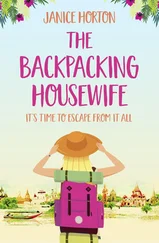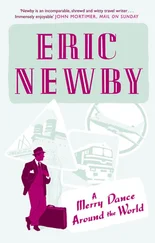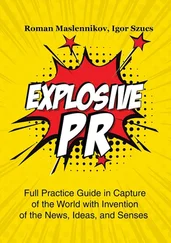In the first few years with no heat, pipes burst all over town, the freeze-thaw cycle moves indoors, and things start to seriously deteriorate. Buildings groan as their innards expand and contract; joints between walls and rooflines separate. Where they do, rain leaks in, bolts rust, and facing pops off, exposing insulation. If the city hasn’t burned yet, it will now. Collectively, New York architecture isn’t as combustible as, say, San Francisco’s incendiary rows of clapboard Victorians. But with no firemen to answer the call, a dry lightning strike that ignites a decade of dead branches and leaves piling up in Central Park will spread flames through the streets. Within two decades, lightning rods have begun to rust and snap, and roof fires leap among buildings, entering paneled offices filled with paper fuel. Gas lines ignite with a rush of flames that blows out windows. Rain and snow blow in, and soon even poured concrete floors are freezing, thawing, and starting to buckle. Burnt insulation and charred wood add nutrients to Manhattan’s growing soil cap. Native Virginia creeper and poison ivy claw at walls covered with lichens, which thrive in the absence of air pollution. Red-tailed hawks and peregrine falcons nest in increasingly skeletal high-rise structures.
Within two centuries, estimates Brooklyn Botanical Garden vice president Steven Clemants, colonizing trees will have substantially replaced pioneer weeds. Gutters buried under tons of leaf litter provide new, fertile ground for native oaks and maples from city parks. Arriving black locust and autumn olive shrubs fix nitrogen, allowing sunflowers, bluestem, and white snakeroot to move in along with apple trees, their seeds expelled by proliferating birds.
Biodiversity will increase even more, predicts Cooper Union civil engineering chair Jameel Ahmad, as buildings tumble and smash into each other, and lime from crushed concrete raises soil pH, inviting in trees, such as buckthorn and birch, that need less-acidic environments. Ahmad, a hearty silver-haired man whose hands talk in descriptive circles, believes that process will begin faster than people might think. A native of Lahore, Pakistan, a city of ancient mosaic-encrusted mosques, he now teaches how to design and retrofit buildings to withstand terrorist attacks, and has accrued a keen understanding of structural weakness.
“Even buildings anchored into hard Manhattan schist, like most New York skyscrapers,” he notes, “weren’t intended to have their steel foundations waterlogged.” Plugged sewers, deluged tunnels, and streets reverting to rivers, he says, will conspire to undermine subbasements and destabilize their huge loads. In a future that portends stronger and more-frequent hurricanes striking North America’s Atlantic coast, ferocious winds will pummel tall, unsteady structures. Some will topple, knocking down others. Like a gap in the forest when a giant tree falls, new growth will rush in. Gradually, the asphalt jungle will give way to a real one.

The New York Botanical Garden, located on 250 acres across from the Bronx Zoo, possesses the largest herbarium anywhere outside of Europe. Among its treasures are wildflower specimens gathered on Captain Cook’s 1769 Pacific wanderings, and a shred of moss from Tierra del Fuego, with accompanying notes written in watery black ink and signed by its collector, C. Darwin. Most remarkable, though, is the NYBG’s 40-acre tract of original, old-growth, virgin New York forest, never logged.
Never cut, but mightily changed. Until only recently, it was known as the Hemlock Forest for its shady stands of that graceful conifer, but almost every hemlock here is now dead, slain by a Japanese insect smaller than the period at the end of this sentence, which arrived in New York in the mid-1980s. The oldest and biggest oaks, dating back to when this forest was British, are also crashing down, their vigor sapped by acid rain and heavy metals such as lead from automobile and factory fumes, which have soaked into the soil. It’s unlikely that they’ll come back, because most canopy trees here long ago stopped regenerating. Every resident native species now harbors its own pathogen: some fungus, insect, or disease that seizes the opportunity to ravish trees weakened by chemical onslaught. As if that weren’t enough, as the NYBG forest became an island of greenery surrounded by hundreds of square miles of gray urbanity, it became the primary refuge for Bronx squirrels. With natural predators gone and no hunting permitted, there’s nothing to stop them from devouring every acorn or hickory nut before it can germinate. Which they do.
There is now an eight-decade gap in this old forest’s understory. Instead of new generations of native oaks, maple, ash, birch, sycamore and tulip trees, what’s mainly growing are imported ornamentals that have blown in from the rest of the Bronx. Soil samplings indicate some 20 million ailanthus seeds sprouting here. According to Chuck Peters, curator of the NYBG’s Institute of Economic Botany, exotics such as ailanthus and cork trees, both from China, now account for more than a quarter of this forest.
“Some people want to put the forest back the way it was 200 years ago,” he says. “To do that, I tell them, you’ve got to put the Bronx back the way it was 200 years ago.”
As human beings learned to transport themselves all over the world, they took living things with them and brought back others. Plants from the Americas changed not only ecosystems in European countries but also their very identities: think of Ireland before potatoes, or Italy before tomatoes. In the opposite direction, Old World invaders not only forced themselves on hapless women of vanquished new lands, but broadcast other kinds of seed, beginning with wheat, barley, and rye. In a phrase coined by the American geographer Alfred Crosby, this ecological imperialism helped European conquerors to permanently stamp their image on their colonies.
Some results were ludicrous, like English gardens with hyacinths and daffodils that never quite took hold in colonial India. In New York, the European starling—now a ubiquitous avian pest from Alaska to Mexico—was introduced because someone thought the city would be more cultured if Central Park were home to each bird mentioned in Shakespeare. Next came a Central Park garden with every plant in the Bard’s plays, sown with the lyrical likes of primrose, wormwood, lark’s heel, eglantine, and cowslip—everything short of Macbeth’s Birnam Wood.
To what extent the Mannahatta Project’s virtual past resembles the Manhattan forest to come depends on a struggle for North America’s soil that will continue long after the humans that instigated it are gone. The NYBG’s herbarium also holds one of the first American specimens of a deceptively lovely lavender stalk. The seeds of purple loosestrife, native to North Sea estuaries from Britain to Finland, likely arrived in wet sands that merchant ships dug from European tidal flats as ballast for the Atlantic crossing. As trade with the colonies grew, more purple loosestrife was dumped along American shores as ships jettisoned ballast before taking on cargo. Once established, it moved up streams and rivers as its seeds stuck to the muddy feathers or fur of whatever it touched. In Hudson River wetlands, communities of cattail, willow, and canary grass that fed and sheltered waterfowl and muskrats turned into solid curtains of purple, impenetrable even to wildlife. By the 21st century, purple loosestrife was at large even in Alaska, where panicked state ecologists fear it will fill entire marshes, driving out ducks, geese, terns, and swans.
Even before Shakespeare Garden, Central Park designers Olmstead and Vaux had brought in a half-million trees along with their half-million cubic yards of fill to complete their improved vision of nature, spicing up the island with exotica like Persian ironwoods, Asian katsuras, cedars of Lebanon, and Chinese royal paulownias and ginkgos. Yet once humans are gone, the native plants left to compete with a formidable contingent of alien species in order to reclaim their birthright will have some home-ground advantages.
Читать дальше
